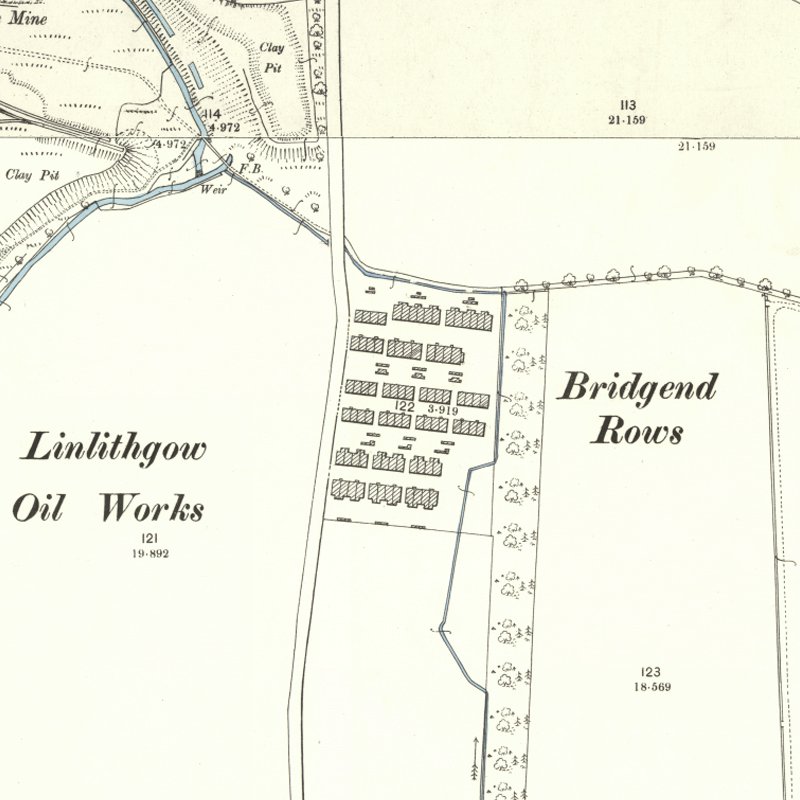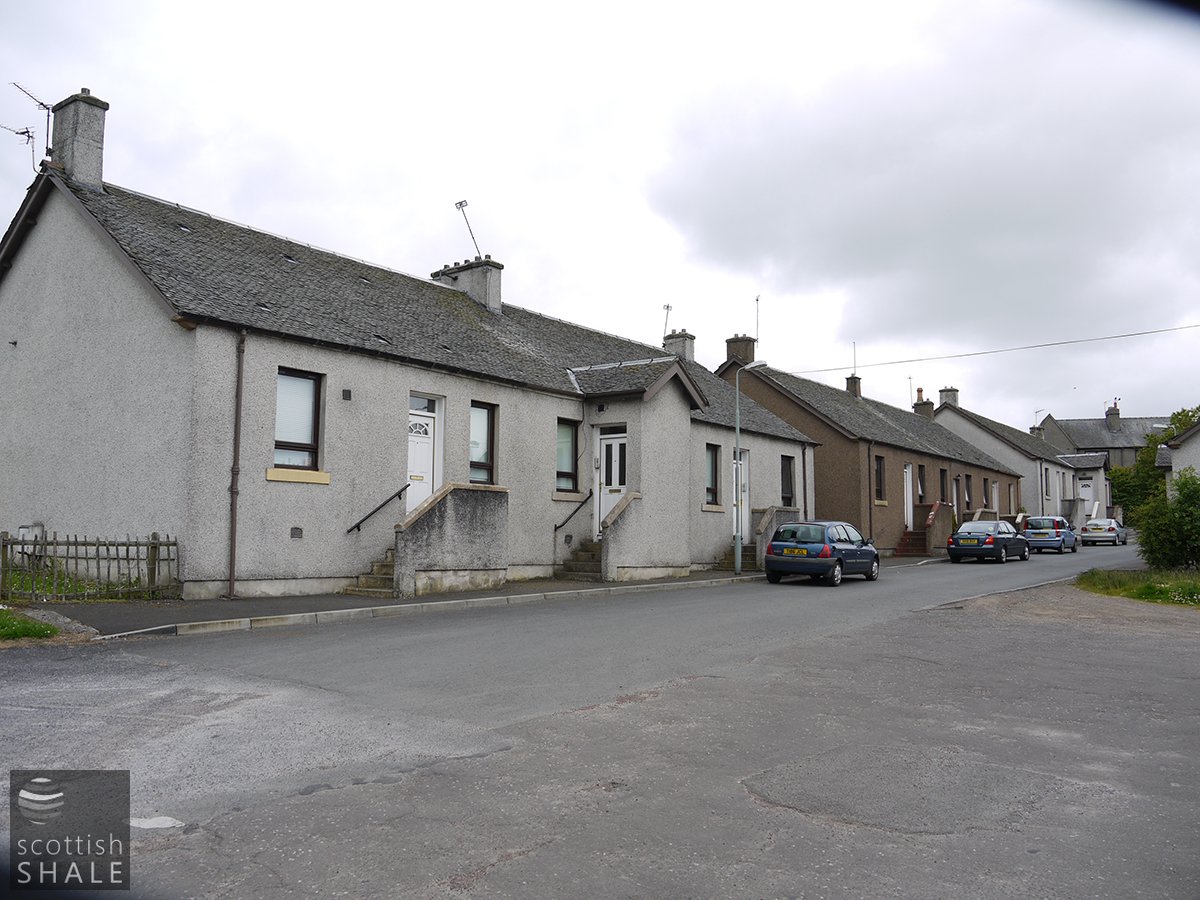- Addiewell village
- Addiewell - Muirhall villas
- Albyn Cottages
- Binnend village
- Bridgend Rows
- Broxburn Rows
- Broxburn - Steele's Rows
- Broxburn - villas
- Burngrange Cottages
- Burnside Cottages
- Cobbinshaw North village
- Cobbinshaw South village
- Dalmeny Rows
- Deans Cottages
- Dedridge Cottages
- East Hermand (village)
- Forkneuk Road, Uphall
- Gavieside village
- Gerson Park
- Greendykes Cottages
- Happy Land
- Hartwood Row
- Hermand New Rows
- Hermand Old Rows
- Holmes Cottages
- Holmes Rows
- Holygate
- Kingscavil Rows
- Kipsyke huts
- Livingston Station village
- Loaninghill Coattages
- Lochend cottages
- Straiton - Meadow Bank cottages
- Mid Breich Rows
- Midcalder - Penny's Buildings
- Middleton Hall - housing
- Mossend village
- Murchison Buildings
- New Holygate
- Newton Cottages
- Niddry Rows
- Oakbank village
- Oakbank Cottages, Westwood
- Redcraig cottages - Oakbank
- Straiton - Pentland Rows
- Philpstoun - The Avenue
- Philpstoun - Wester Pardovan Rows
- Pumpherston - Erskine Place
- Pumpherston - North Village
- Pumpherston - Pumpherston Road
- Pumpherston - South Village
- Pumpherston - Uphall Station Road
- Raeburn Rows
- Redhouse Cottages
- Roman Camp village
- Rosebery Cottages
- Seafield Rows
- Stable Rows
- Starlaw Rows
- Stewartfield Rows
- Straiton - Oakbank Cottages
- Tarbrax (village)
- Uphall Station Rows
- Uphall Station - Beechwood
- Uphall Station - Office Rows
- Uphall Station - Stankard Rows
- West Calder - Union Street & "Dalveen"
- Westerton Rows
- Westfield Rows
- Westwood (old rows)
- Winchburgh village
- Woolfords (new rows)
- Woolfords (old rows)
Bridgend Rows
Built to serve Champfleurie Oil Works, Bridgend consisted of 18 rows of four dwellings and 2 rows of six dwellings. Some of these appear to be single room houses.
Conditions were described in evidence presented to the Royal Commission on housing conditions in 1914:
"At Bridgend (there are) some eighty-six houses, all owned by Lord Rosebery, and leased to James Ross & Company, of Philpstoun Oil Company. The houses consist of room and kitchen. There are a few single apartments. At Bridgend thirty-six houses have small sculleries. One dry-closet is provided for every two tenants, and a coal-cellar for each tenant, but there are no washhouses. Water is supplied by stand-pipes. The rental is 1/9. for single-apartment houses, and 2/6. for two-apartment houses, inclusive of local and county rates. The Company remove the refuse from dustbins every morning. The population of Kingscavil and Bridgend is 802. A number of the houses are empty, and many need repairs. In some cases the keeping of too many lodgers leads to overcrowding."
Five rows of the largest two-apartment houses remain as "Auldhill Cottages".
Recent images
NEW HOUSES FOR WEST LOTHIAN VILLAGES
Tenders have been accepted for the building of 184 houses of 3, 4 and 5 apartments to take the place of the condemned houses in the old shale-mining villages of Bridgend and Kingscavil, near Linlithgow. Eighteen months ago an official inquiry was held at Linlithgow into housing conditions in these villages. It was the first inquiry to be held by the Department of Health under Section 27 of the Housing (Scotland) Act, 1930 and it was pointed out at that inquiry that the villages of Kingscavil and Bridgend first came under notice of the County Council in 1931, when Mr A M Smith, sanitary inspector for Linlithgow district, declared that the villages ought to be demolished. At an official inquiry, Mr Joseph Aitken, Fauldhouse stated that West Lothian held the unenviable distinction of having the highest percentage of population living in two-apartment houses, and the highest number of persons per room of any in Scotland. The houses about to be built by the County Council, to plans prepared by Mr Matt Steele architect, Bo'ness will be of the larger size specified in recent instructions issued by the Department of Health.' The cost of the scheme is 58,000.
The Scotsman, 24th March 1936
.......
"The West Lothian County Council scheme to establish a new village at Bridgend is progressing favourably. The new village is being built alongside the old miner's rows at Bridgend, and the population of the old Bridgend and also the people from the neighbouring village of Kingscavil will be housed there."
Midlothian Advertiser, 4th December 1936










